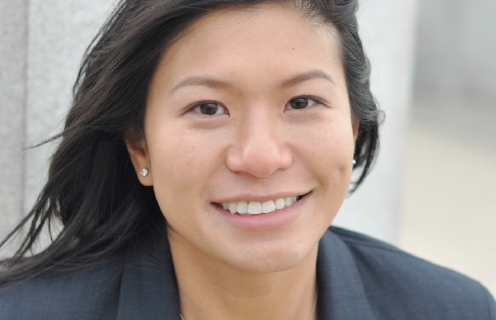EquiLend
Dow Veeranarong
05 May 2015
Following clients’ demands for a consolidated trading system to enable increased executions, EquiLend has unveiled NGT. Global product owner Dow Veeranarong explains the ins and outs
 Image: Shutterstock
Image: Shutterstock
What is Next Generation Trading and are any of its features groundbreaking or unique? Will changeover complications be an issue?
Next Generation Trading is a consolidated, multi-asset class trading platform for the securities finance marketplace. Often, with a new product or service offering, it is not a brand new invention; rather using existing technologies in different ways. As such, NGT is leveraging existing concepts and technologies in a new way—consolidated from a screen perspective and from a back-end messaging perspective. We have taken the best of our existing services to create one platform for our clients. What is unique is how clients are interested in changing their trading behaviour to increase efficiency and execution, and therefore we’ve built NGT to accommodate those needs.
As with any change, personal or professional, there will be some challenges. And like with any technology, we expect to have early adopters, then the majority of our clients in the bell curve divided into the early and late users and finally the laggards. Challenges will depend on clients’ resources to invest in their technology and connectivity to EquiLend as well as their traders’ willingness to adopt the platform.
Because the securities finance business is a business based on relationships, counterparties will be encouraging each other to leverage NGT for their trading activities to take full advantage of the system.
Where did the idea come from?
In 2013, EquiLend’s board of directors—consisting of representatives from each of our 10 owner firms—agreed with EquiLend that we should host trading and technology working groups to revisit our trading suite. This group met monthly to identify the main challenges experienced on the platform, common goals across our clients, and technological capabilities and limitations for different clients. One immediate observation was that the business landscape was constantly changing at a pace much quicker than in previous years due to the ever-changing regulatory environment.
Our platform, along with many of our clients’ trading systems, needed certain enhancements in order to keep up with the changing business demands. With this information, EquiLend brainstormed ideas for what a future landscape could look like. Because we met with both traders and technologists via our working group, we were able to propose a solution that made sense from the business perspective as well as to the technology teams, which ultimately helps with implementation.
Is it a finished product or is it an ongoing process? Can clients expect modifications in the future?
It is definitely an ongoing process. As with any new technology that people are exposed to as consumers, technology is ever changing and improving. With NGT, we expect the same. We have a number of new components planned for our clients in 2015, but at the same time we wanted to get NGT out to the market to allow our clients to use the system and give us feedback.
We are truly focused on the client experience, and that means hearing from the clients what they need and taking that feedback into consideration in our future decisions. We expect that NGT will be the platform to support our clients’ trading needs going forward. That means it isn’t just something that we can design and release in one shot; it means that we need to ensure we are continually working with our clients to improve the platform.
Will its day-to-day functions vary for clients in different jurisdictions?
NGT supports different asset classes as well as trading in different jurisdictions. The functions don’t vary greatly, but the required fields to support the different regions do vary. We’ve built this into NGT because we need to ensure that clients across regions, asset classes and technology capabilities can interact with each other.
So on one side, the client might be a screen-based user, while on the other side, the client might be completely automated. We have to standardise the underlying information so that those two clients can seamlessly communicate with one another to execute trades.
How important is client opinion to these kinds of platforms?
It is critical—we couldn’t develop something for our clients without their involvement. Over the past 18 months, we have sat with clients on the ground in five continents to understand their unique technological limitations and main goals with NGT.
With that information we were able to develop NGT. Client feedback is critical in helping us identify the most common challenges where we can add the most value for the greatest good. As with any technology, there are many enhancements that we have identified as part of our ongoing use and testing. Client feedback helps us prioritise those items as well as identify new ideas that could improve the user experience.
What prompted the phasing out of AutoBorrow ‘schedules’? Will the process be missed?
Clients did. Doing away with schedules will allow clients to onboard their trading counterparts much more efficiently, which was something many of them have asked us for, even before we began developing NGT.
In particular, our clients trading international securities often highlighted the cumbersome setup as well as the time spent on a daily basis chaining their list of needs through every schedule (combination of terms) in order to fill their requests.
As with any change, there is a degree of uncertainty around changing the process. But in general clients are looking forward to the flexibility offered in the new schedule-free paradigm, where trade terms are embedded in each message
← Previous interview
Comyno
Markus Büttner
Next interview →
OneChicago
David Downey
 Image: Shutterstock
Image: Shutterstock 